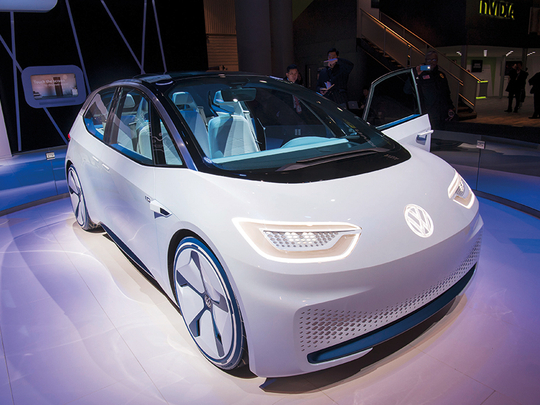
Dubai
Don’t even think of putting in the backseat … self-driving cars of the future could end up altering seating arrangements as well.
“In two or three generations, people will be born with the concept of fully-autonomous transport and the concept of a backseat will disappear,” said Floris van de Klashorst, Senior Vice-President of Digital Products & Services at Volkswagen Group. This will make “what some may consider a fantasy today, the mobility of the future.
“Yes, there will be a transition process where we will see a combination of semi- and fully-autonomous vehicles operating in parallel.”
Global carmakers are framing their own visions of what a self-driving future should look like. Some have anchored this vision to what smart cities will need to meet their mass transportation requirements. Picture fleets of vehicles moving between points to pick up and drop off commuters … and without the visible help of a driver.
That’s one perspective. Another sees driving being freed up to allow passengers to use their commuting time for multiple purposes. Even in the driver’s case.
But how long will it actually take for these visions to end up on the roads … and not just as test vehicles?
“We do not believe that we will see the roads fully equipped with completely autonomous vehicles overnight,” said van de Klashorst. “We will see self-driving technologies continue to be implemented in manufactured cars to make the driving experience better for the end-user.
“At the same time, we can see new modes of transportation — including vehicles without steering wheels and pedals — starting to work in parallel with our current transport, especially in the big cities for ride-hailing and ride-sharing.
“Autonomous driving technologies are applied in both modes of transport but with a different purpose. Technology in the owned vehicles will relieve the drivers from a certain task, and in the autonomous ride-sharing and ride-hailing vehicles it would be to completely drive the vehicle with no interaction from a driver.”
Even with the competing visions and technologies that will drive tomorrow’s self-driving concepts. there are some base rules all carmakers agree on.
There are five levels of autonomy, with levels one to three “taking away some of the responsibility from the driver through self-driving technologies”. But the driver will still need to be on alert and on hand to take control when needed. (Volkswagen is already implementing self-driving technologies through the Park Assist feature, which can be found in models such as the Tiguan and the all-new Teramont. The German manufacturer is pumping in more than 34 billion euros through to end 2022 in its electric, autonomous driving and digitalisation push. Most of this will go into the electrification and hybridisation of all Group models.)
Then if all goes according to plan, come levels four and five, where the “autonomous vehicle does not need the involvement of a driver to maintain safety and the vehicle can pickup passengers to take them from A to B with complete independence”.
According to van de Klashorst, “There will be a dramatic disruption in transportation in general over the next 5-10 years. The change will be in three dimensions — electrification, automation and a change in ownership.
“Electrification will continue to grow dramatically, automation will come into play, and ownership will go down, resulting in an increase in the sharing of vehicles.
“When you combine these three dimensions, you can dramatically reduce the cost of mobility. If you compare the traditional ownership of vehicles and driving, with shared electric autonomous vehicles in urban new cities, we see scenarios in which the cost per kilometre is reduced by roughly a five-fold.
“This will democratise transport. Owning a car will no longer be a necessity, particularly in the bigger cities, as this is where autonomous vehicle ride-sharing and ride-hailing will start.
“However, this is not to say that owning a car will become only a luxury or a hobby — owning a car will coexist with autonomous vehicles for the foreseeable future.”
Future legislation will also set the course for self-driving
Global carmakers — and tech companies — are racing ahead with their plans to put together a viable self-driving future. But amid this buzz of activity, countries too have a role to play.
“Autonomous vehicles from manufacturers will all need to operate on the same infrastructure,” said Floris van de Klashorst of the Volkswagen Group. “This means that there will be standards in communication — for example, in how the vehicle communicates with the infrastructure.
“However, there are differences in legislation that need to be addressed across countries. The responsibility will lie not just with the manufacturers, but also with the countries.
“Legislation needs to be harmonised and there is a role for both technology players and the authorities to make sure that the systems are compatible and built to one standard. In the future, we will arrive to a stage where all vehicles adhere to the same safety standards and the differentiation in vehicles will be in service level, as opposed to horsepower or certain technological features.”












